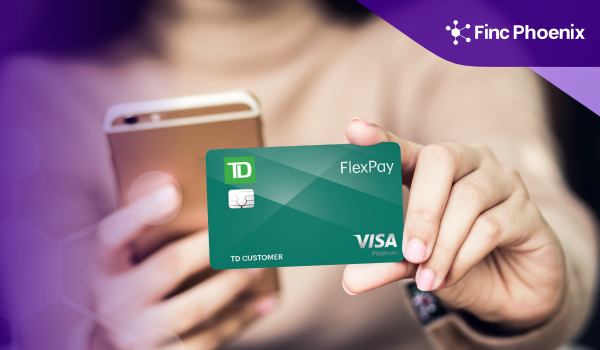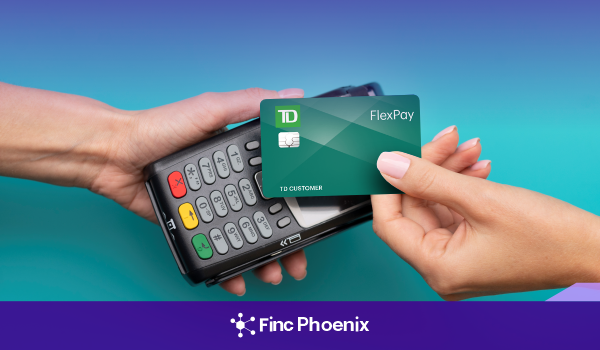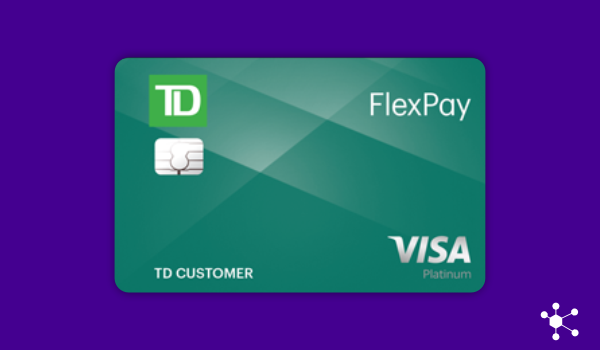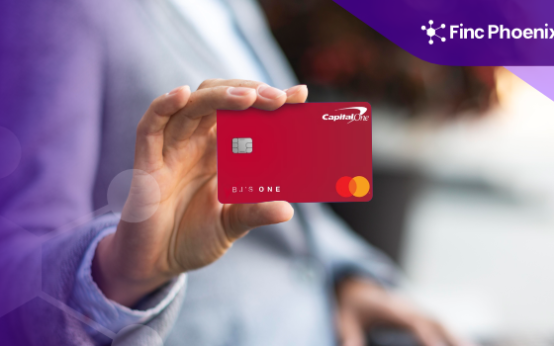
In an industry often criticized for complex terms and punitive fees, the TD FlexPay Credit Card from TD Bank stands out for its remarkably consumer-friendly design. This credit card is a specialized instrument created for one primary purpose: to provide U.S. consumers with a long, interest-free period to pay down existing high-interest credit card debt.
This review will provide a detailed examination of the card’s features from a consumer advocacy perspective. We will analyze how its policies on late fees and penalty APRs provide a crucial safety net for individuals managing a tight budget. For residents in its East Coast service area, the TD FlexPay card is more than just a balance transfer tool; it is a financial product that appears to be genuinely designed to help the user succeed without resorting to common industry “traps.”
A Deep Dive into the Card’s Consumer-Friendly Policies
- An Extensive 18-Month 0% Intro APR on Balance Transfers: The core feature is the 18-billing-cycle period where transferred balances do not accrue interest. This provides a substantial and stable timeline—a full year and a half—for cardholders to systematically reduce their principal debt without interest charges working against them. This is one of the longest introductory periods available on the market.
- The “No Penalty APR” Protection: This is a critically important, pro-consumer feature. Many credit cards will impose a very high “penalty APR” (often 29.99% or more) on your entire balance if you make a single late payment. The TD FlexPay card does not have a penalty APR. This means a one-time mistake will not cause your interest rate to skyrocket, protecting you from a single error turning into a major financial setback.
- The “Late Fee Forgiveness” Safety Net: TD Bank has implemented an automatic waiver for the first late payment fee within a 12-month period. If an unexpected event causes you to miss a payment due date for the first time in a year, the bank will forgive the associated fee. This provides a valuable monetary buffer, though it is crucial to understand this does not prevent the late payment from being reported to the credit bureaus.
- A $0 Annual Fee Structure: The card has no annual fee. This ensures that the only primary cost associated with using the card for its intended purpose is the initial, one-time balance transfer fee. There are no recurring costs to diminish the value of your interest savings.
- Valuable Cell Phone Protection: A high-value, built-in insurance policy. By simply paying your monthly cell phone bill with the TD FlexPay card, you activate coverage against covered theft or damage. This is a practical benefit that can save you hundreds of dollars in out-of-pocket repair or replacement costs.
Who Can Apply: Applicant Profile
In addition to the geographical requirement, applicants should meet the following criteria:
- Credit Score: A good to excellent credit score is recommended (typically a FICO score of 670 or higher).
- Age and Residency: You must be at least 18 years of age and a U.S. resident.
- Identification: A valid Social Security Number is required.
Important Geographic Limitations on Eligibility
This card’s availability is a critical factor. The TD FlexPay Credit Card is a regional product, generally available only to residents of states on the U.S. East Coast where TD Bank has a retail presence. Eligible states include:
- Connecticut
- Delaware
- Florida
- Maine
- Maryland
- Massachusetts
- New Hampshire
- New Jersey
- New York
- North Carolina
- Pennsylvania
- Rhode Island
- South Carolina
- Vermont
- Virginia
- Washington, D.C.
How to Apply: A Clear and Simple Process

- Confirm Your Residency: First, ensure you live in one of the eligible states listed above.
- Visit the TD Bank Website: Navigate to the official TD FlexPay Credit Card application page.
- Complete the Secure Application: Fill out the online form with your personal and financial information. You will have the option to include your balance transfer requests as part of the application.
- Review the Terms: Before submitting, carefully read the card’s terms, rates, and fees, paying close attention to the 3% introductory balance transfer fee.
- Await a Decision: You will often receive a decision from TD Bank within minutes of submitting your application.
Consumer Advocacy FAQs
- Are there any ‘hidden traps’ in the fine print I should know about?
The TD FlexPay card is refreshingly transparent. The most important detail to be aware of is that the 0% introductory APR offer does not apply to new purchases. New purchases will be charged the standard variable APR immediately if not paid in full. To avoid unexpected interest, this card should be used exclusively for the balance you transfer onto it. - What is the real difference between “Late Fee Forgiveness” and it not affecting my credit score?
This is a crucial distinction. Late Fee Forgiveness only means the bank will refund the monetary penalty (e.g., a $40 fee). It does not stop the bank from reporting your payment as late to the credit bureaus if it is more than 30 days past due. A late payment report can significantly lower your credit score. The forgiveness protects your wallet from the fee, not your credit report from the negative mark. - Why is “No Penalty APR” so important if I plan to pay on time anyway?
It’s an important safety net. Even the most disciplined person can have an unexpected financial issue or make a mistake. With other cards, a single late payment could cause your APR to jump from 20% to 30% for an indefinite period, costing you a huge amount of money. The absence of a penalty APR on this card ensures that a single error does not have long-lasting and severe financial consequences. - Is this card a good long-term product, or is it just for the balance transfer?
It is an excellent long-term product to keep in your wallet, even after you’ve paid off your balance. Because it has a $0 annual fee, you can keep the account open at no cost. Keeping a no-fee card open for a long time helps to increase the average age of your credit accounts, which is a positive factor for your credit score.


 BJ’s One Mastercard Review <p class='sec-title' style='line-height: normal; font-weight: normal;font-size: 16px !important; text-align: left;margin-top: 8px;margin-bottom: 0px !important;'>Earn 3% back at BJ’s & get fuel discounts—plus 1.5% on other purchases, no yearly fee.</p>
BJ’s One Mastercard Review <p class='sec-title' style='line-height: normal; font-weight: normal;font-size: 16px !important; text-align: left;margin-top: 8px;margin-bottom: 0px !important;'>Earn 3% back at BJ’s & get fuel discounts—plus 1.5% on other purchases, no yearly fee.</p>  U.S. Bank Altitude Go Secured Visa Review <p class='sec-title' style='line-height: normal; font-weight: normal;font-size: 16px !important; text-align: left;margin-top: 8px;margin-bottom: 0px !important;'>Earn up to 4X points as you rebuild credit—no annual fee & streaming bonus included.</p>
U.S. Bank Altitude Go Secured Visa Review <p class='sec-title' style='line-height: normal; font-weight: normal;font-size: 16px !important; text-align: left;margin-top: 8px;margin-bottom: 0px !important;'>Earn up to 4X points as you rebuild credit—no annual fee & streaming bonus included.</p>  Upgrade OneCard Review <p class='sec-title' style='line-height: normal; font-weight: normal;font-size: 16px !important; text-align: left;margin-top: 8px;margin-bottom: 0px !important;'>Earn up to 3% cash back, choose Pay Now or Pay Later, no annual fee — one card for all.</p>
Upgrade OneCard Review <p class='sec-title' style='line-height: normal; font-weight: normal;font-size: 16px !important; text-align: left;margin-top: 8px;margin-bottom: 0px !important;'>Earn up to 3% cash back, choose Pay Now or Pay Later, no annual fee — one card for all.</p>